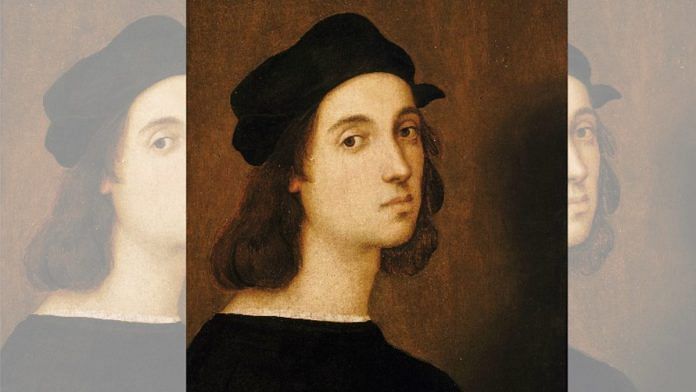New Delhi: Five hundred years ago, Italian painter Raphael, known as of one the three greats from the Renaissance period, had died after catching a fever from being outside in “freezing cold nights” while visiting his lovers.
Now, a new study claims that the master artist and architect didn’t die of the sexually-transmitted infection syphilis but a disease similar to coronavirus. The findings were published this week in the Internal and Emergency Medicine journal.
“From what we know, Raphael died of a pulmonary illness very similar to the coronavirus we’ve seen now,” medical historian Michele Augusto Riva is quoted in a 18 July Agence France-Presse report on the study.
Riva, along with three others at the University of Milano-Bicocca, co-authored the study which indicates that what took Raphael’s life was an “acute disease, characterised by high and continuous fever”.
Titled ‘It wasn’t the sex: bloodletting fatal for Raphael…”, the AFP report says Raphael, after becoming ill, had not informed the doctors that he had been out and about on cold nights. It suggests the artist would have caught a fever and illness from the exposure to the cold weather, and not sex.
The doctors, unaware of Raphael’s night adventures, had resorted to bloodletting to reduce the fever which had “fatally” weakened the revered artist, leading to his untimely death at the age of 37 in the year 1520, exactly 500 years ago.
At the time, blood letting was a common medical treatment used on patients.
Also read: Covid-19 behaves like a sexually transmitted infection
What experts say
While popular myth holds Raphael died of syphilis after “wooing one too many ladies”, experts largely agree Raphael succumbed to a different infection, the AFP report says.
Raphael, down with “raging fever”, had been treated by “the best doctors in Rome, sent to him by the Pope”, Riva told AFP.
Riva also said, “It was much, much colder in March in that period, and it’s very likely he caught pneumonia.”
Similarly, art historian and painter Giorgio Vasari in his written work on artist’s lives, published in 1550, says Raphael had not told the doctors about the “frequent night outings in the cold”.
“In that period, doctors were aware of the dangers of bloodletting in the treatment of infectious diseases, but were acting on misinformation,” Riva had said, adding, “A medical mistake, and his own mistake in not faithfully recounting his history, contributed to Raphael’s death.
“A recent sexually transmitted infection — such as gonorrhea and syphilis — could not explain the incubation period … An acute manifestation of viral hepatitis could not be considered without jaundice and other signs of liver failure. No epidemics of typhus or plague were reported in the city of Rome at that time,” the study explained, according to the news report.
Also read: Art in the time of CAA-NRC protests: India is seeing a creative renaissance under Modi & Shah






